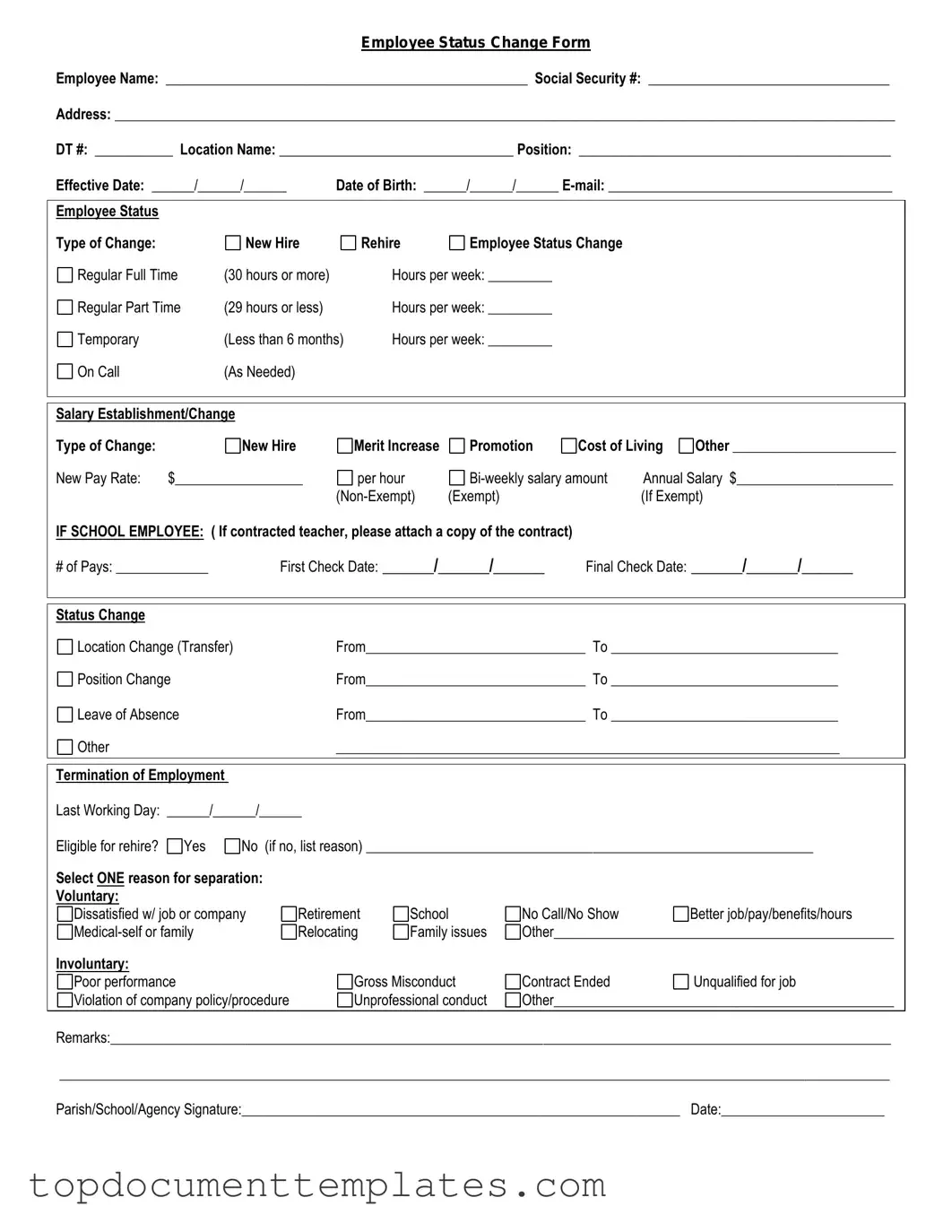The Employee Status Change form is a crucial document used by organizations to officially record any changes in an employee's status within the company. This form captures a variety of essential information, including changes in job title, department transfers, promotions, demotions, or terminations. By documenting these changes, the form ensures that all personnel records are accurate and up-to-date, which is vital for payroll, benefits administration, and compliance with labor laws. Additionally, the form often requires details such as the effective date of the change, the reason for the change, and any necessary approvals from management. Utilizing this form helps streamline the process of updating employee records, thereby promoting efficient human resource management and maintaining clear communication between departments. Overall, the Employee Status Change form serves as a key tool for both employees and employers, facilitating a smooth transition during periods of organizational change.
